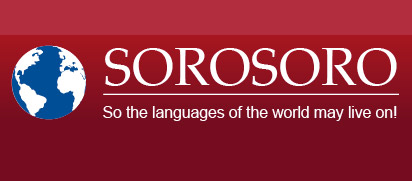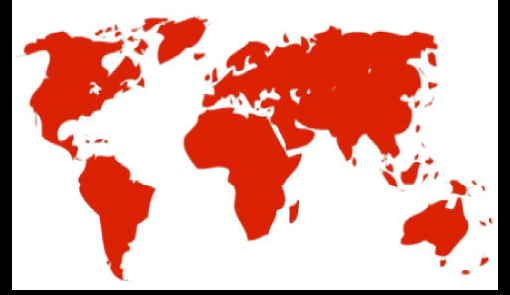Print  |
|


Choco languages
Page revised by Daniel Aguirre, 2009.
Data about Choco languages
Where are Choco languages’ spoken?
These languages are spoken in Panama, Ecuador and the greatest number of speakers in western Colombia.
Number of speakers (valuation) :
About 120 000 according to UNESCO
About 66 000 according to ethnologue.com (SIL).
Around 60.000 according to Centro Colombiano de Estudios de Lenguas Aborigenes –CCELA, of the Universidad de los Andes, Bogota, Colombia.
Classification
According to Pardo Mauricio and Aguirre Daniel the Choco Family is made up of two languages: Wounan and Embera. Wounan (with at the most two close dialects, corresponding to the two largest settlements in Colombia –see Choco Languages, at the end of this paper-) has a pretty much homogeneous talk; Embera can be divided in 5 dialects in Colombia, some of them now mutually unintelligible.
Noanamá (other name : waunana) : 11 000 speakers according to UNESCO and 6.000 according to Aguirre
Emberá 110 000 speakers according to UNESCO and 60 000 according to SIL for the whole group.
5 isoglosses accordin Pardo-Aguirre
- Atrato, Upper Baudo, Panama
- Northern Antioquia, Cordoba
- Upper San Juan
- Mid Baudo
- South Coast
Comments on the Choco’s languages’ classification:
We follow Aguirre & Pardo’s classification (1987).
Choco languages have been compared with Chibchan and Paez languages but this comparison is only an hypothesis for the moment.
Recently the Choco Family has been classified as an independent family (Pardo-Aguirre), contrary to Rivet Paul and other linguist’s classification as a Caribean language.
Are the Choco languages endangered?
The Choco languages are endangered, but the lack of data about its speakers makes it difficult to have a precise valuation on their vitality’s degree.
They are endangered even with the apparently large number in some locations owe to the present situation of discrimination, migration and generalized violence in the country.
Ethnographic elements:
How did Choco speakers live before colonization ?
Before colonization, the Emberás and the Noanamás lived in high altitude tropical forests of Panama’s isthmus, one of the most humid region on earth. They lived in a territory going from Costa Rice to the North of Colombia. They were semi-nomads, they were hunters and fishermen and they had a slash and burn agriculture on a small scale.
Each community represented an autonomous political entity, a chief (the Noko) and a shaman (the Aibana) shared the power of the community.
How did they live after independence?
They remained isolated and preserved from colonization for a long time and then Panama’s and Colombia’s industrial and social development disrupted Embera’s and Noanama’s environment which has radically changed since the 70’s.
The Pan-American expressway’s layout, a project that was abandoned since then, cuts their traditional territory in two. This construction had huge consequences: poor farmers attracted by the project came to the region to exploit new lands and started a terrific deforestation. The construction of two hydro-electric dams was also a factor of change.
The Emberas and the Noanamas became allied in the 80’s to start an armed struggle against their government for the defense of their rights and of their territory. Their political organization was recognized and they obtained a semi-autonomous territory (a « comarca »).
An elected regional chief is now at the head of their organization and the decisions have to be discussed and voted. In 1998, the Noanamas formed a independent political organization as they considered that they were systematically in a minority in the previous organization.
How do they live today ?
Faced with radical and sudden changes in their environment, the Choco populations had to transform their way of life and their traditional organization. These populations are the poorest in the country. Their territory has been mainly reduced and they don’t have title deeds to exploit the lands and modern capitalism is a huge obstacle for them.
Many young people leave their villages to earn more in the cities, but they rarely succeed. Their cultures are endangered even though some projects have been developed within the communities, as tourism and arts and crafts.
Linguistic details :
This point will be developed later.
Sources:
Campbell, Lyle (1997). American Indian languages: the historical linguistics of Native America. Oxford: Oxford University Press.
Aguirre Daniel (2006) “Choco languages”. In THE ENCYCLOPEDIA OF LANGUAGE AND LINGUISTICS, Second Edition. Volume 2. Elsevier Ltd. Editor-in-chief Keith Brown. England. pp. 367-381.
Aguirre Daniel & Pardo Mauricio (1987) “Dialectología Chocó”.In ESTADO ACTUAL DE LA CLASIFICACIÓN DE LAS LENGUAS INDÍGENAS DE COLOMBIA. Ponencias presentadas en el Seminario Taller, realizado en el Instituto Caro y Cuervo. Febrero 10-12 de 1987. Compilación y Edición de M. L. Rodríguez de Montes. Instituto Caro y Cuervo. Bogotá. 1993. pp. 269-312
Please do not hesitate to contact us should you have more information on this language: contact@sorosoro.org








